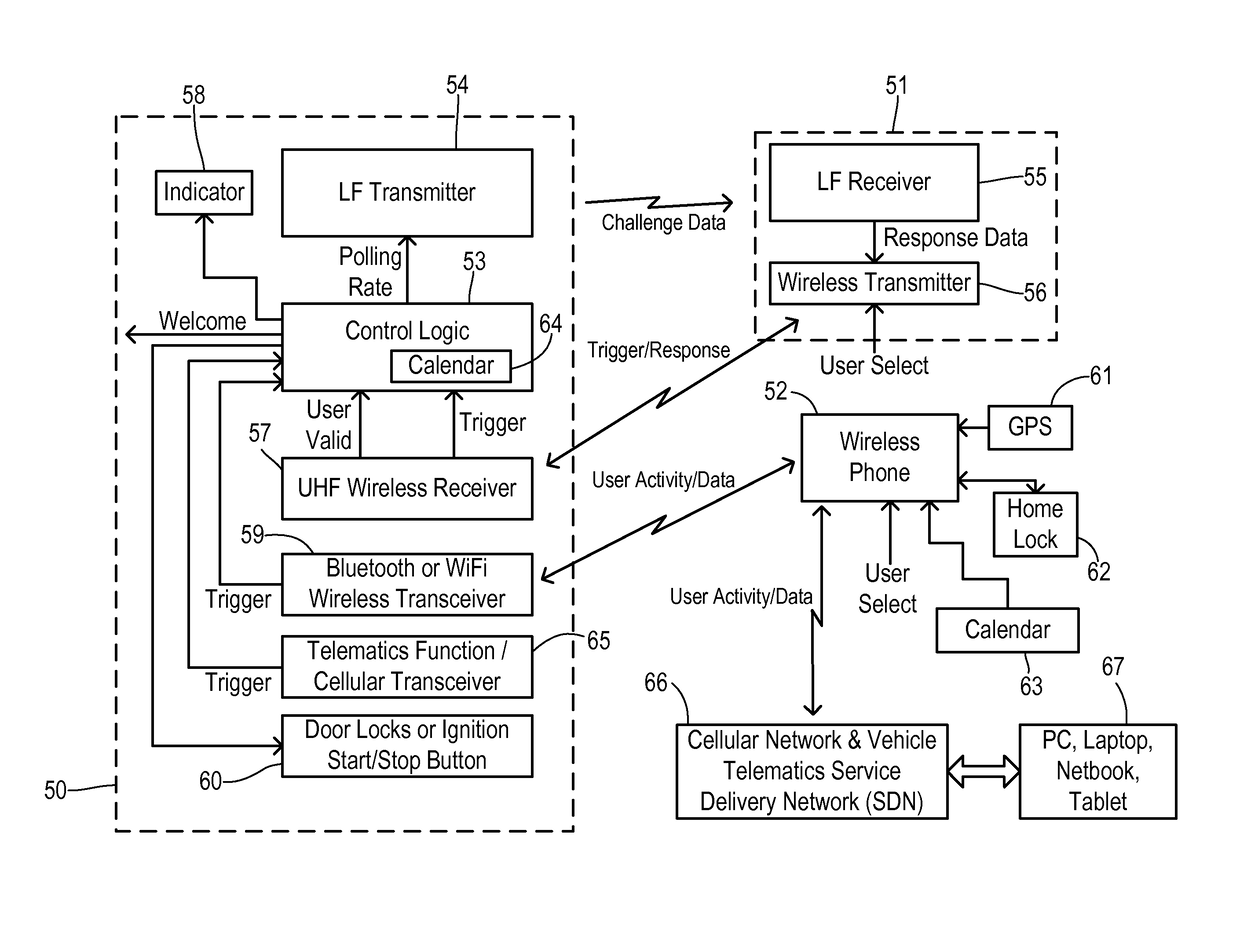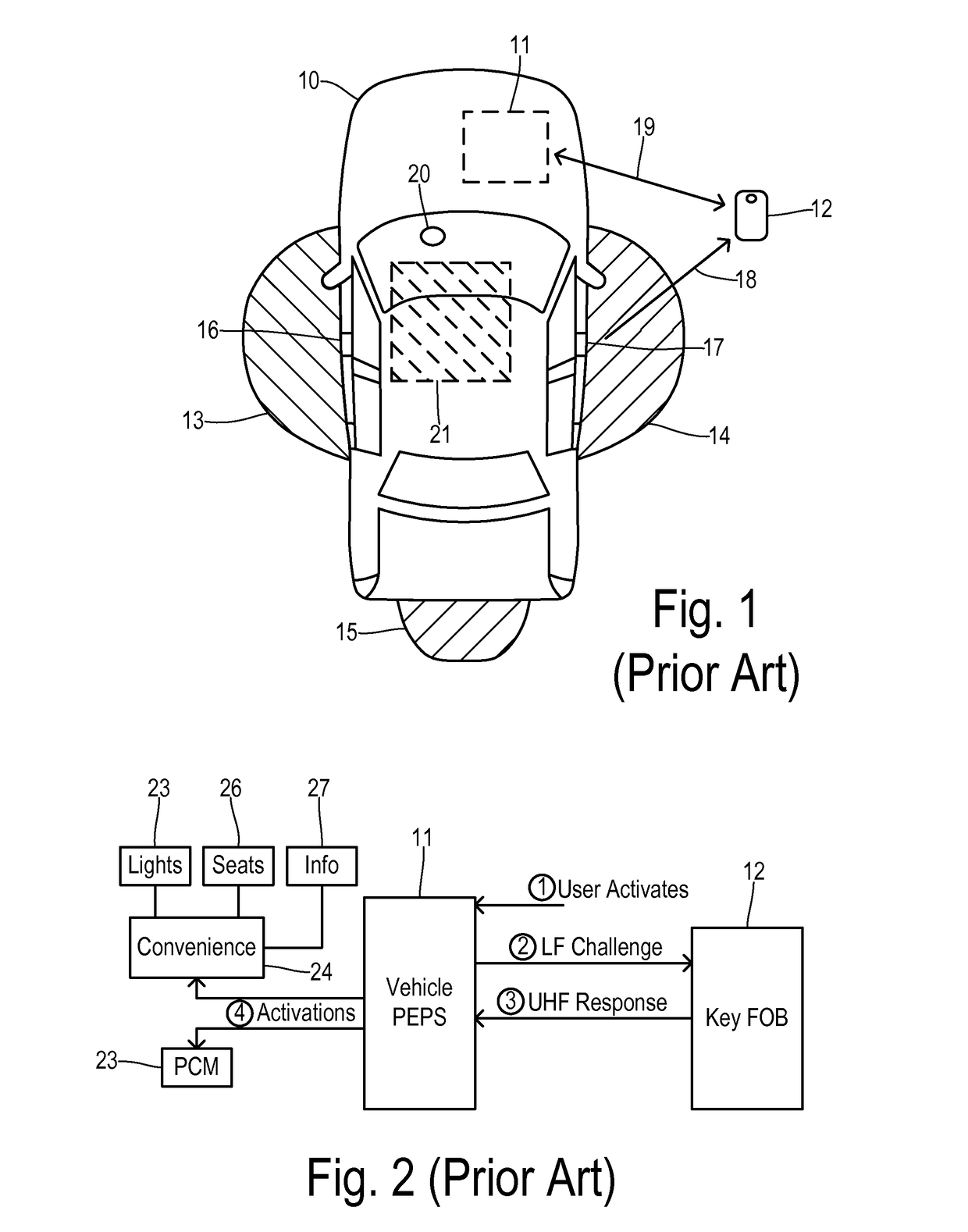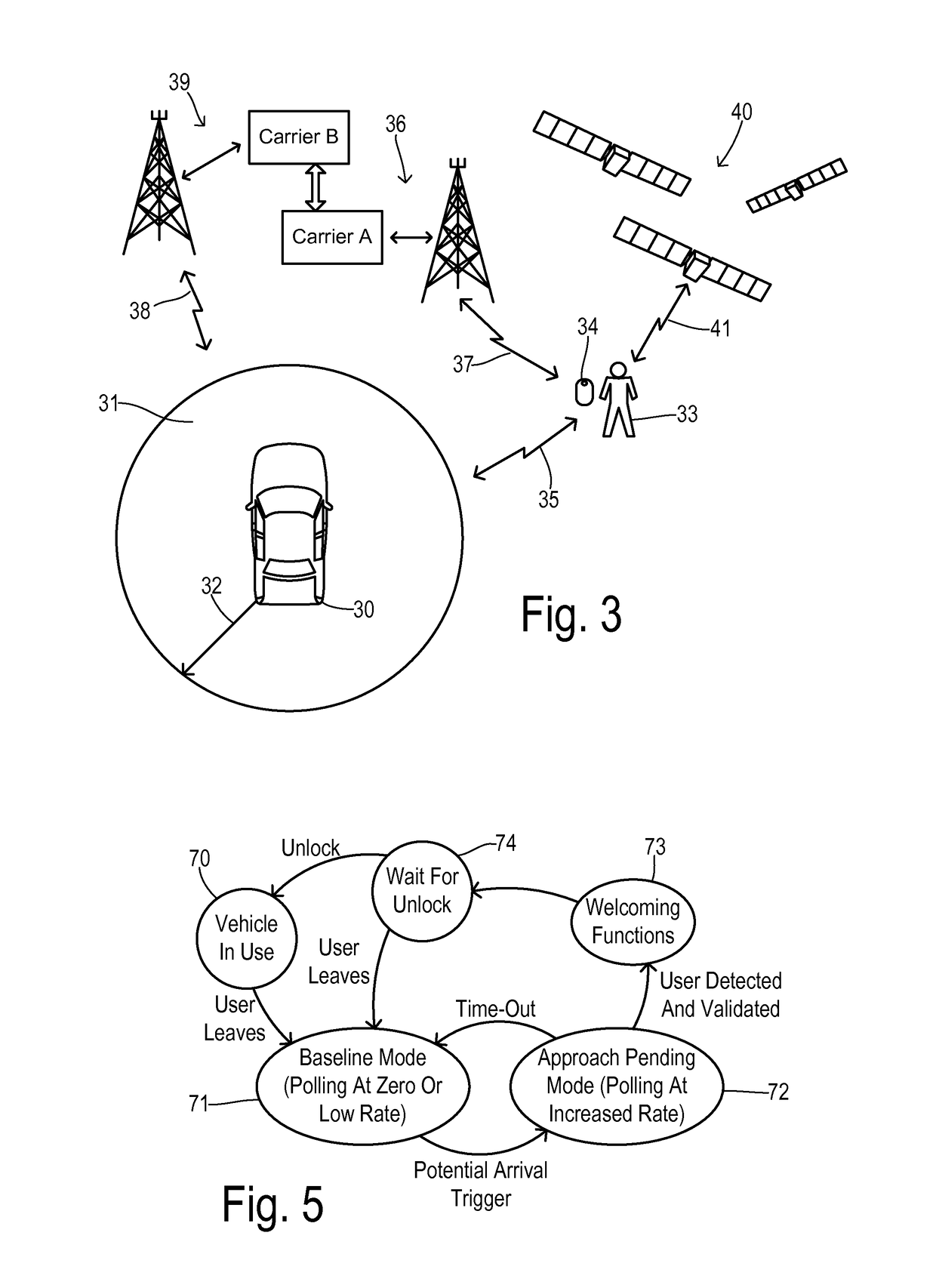User proximity detection for activating vehicle convenience functions
a technology of user proximity and convenience function, which is applied in the field of activating the welcoming function, can solve the problems of insufficient energy to start the vehicle engine, power consumption too high to allow any significant operation time of the engine, and the typical only initiated welcoming function, etc., to increase the potential for the user to approach, increase the overall average battery drain, and increase the effect of repetition ra
- Summary
- Abstract
- Description
- Claims
- Application Information
AI Technical Summary
Benefits of technology
Problems solved by technology
Method used
Image
Examples
Embodiment Construction
[0021]In one fundamental feature of this invention, an “Approach Pending” mode can be triggered directly by a manual user command being sent to the vehicle that indicates they plan to approach the vehicle shortly and / or triggered indirectly by an automatic method that infers a possible upcoming use of the vehicle based on actions with or movement of other wireless devices such as a smart phone. The direct manual user command may be a dedicated approach pending button or the approach pending function may be tied and triggered by associated button functions such as Remote Start or Car Finder features.
[0022]Since approach triggers derived from a smart phone or other device are used only to activate (or otherwise increase the use of) the short-range LF scanning in an attempt to detect user proximity, the advantages of LF scanning are still obtained while reducing the incremental vehicle battery current draw to acceptable levels. Thus, only when a coarser detection method with a lower cu...
PUM
 Login to View More
Login to View More Abstract
Description
Claims
Application Information
 Login to View More
Login to View More - R&D
- Intellectual Property
- Life Sciences
- Materials
- Tech Scout
- Unparalleled Data Quality
- Higher Quality Content
- 60% Fewer Hallucinations
Browse by: Latest US Patents, China's latest patents, Technical Efficacy Thesaurus, Application Domain, Technology Topic, Popular Technical Reports.
© 2025 PatSnap. All rights reserved.Legal|Privacy policy|Modern Slavery Act Transparency Statement|Sitemap|About US| Contact US: help@patsnap.com



